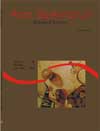Nutritive value of free-floating aquatic macrophytes (<em>Eichhornia crassipes</em>, <em>Pistia stratiotes</em> and <em>Salvinia molesta</em>), used in aquaculture waste treatment
Abstract
The aim of this study was to evaluate the nutritive value of free-floating aquatic macrophytes, Eichhornia crassipes (Mart.) Solms (Pontederiaceae), Pistia stratiotes (L.) (Araceae) and Salvinia molesta (Mitchell) (Salviniaceae) used in a Nile tilapia (Oreochromis niloticus) waste treatment, and these species biomass potential uses. The vegetal biomass samples were collected from 0.25 m² floating squares and divided in aerial and submerse parts, to determine the concentrations of cell wall fraction, soluble carbohydrates, polyphenols, lipids, crude protein and total phosphorus. The higher nutritive value was observed in E. crassipes and S. molesta aerial parts, and in P. stratiotes total biomass, due to their lower cell wall fraction mean rates (60.7; 64.2 and 56.9 % dry mass, respectively) and to the higher rates of: crude protein (10.1; 9.1 and 8.8 % dry mass, respectively), soluble carbohydrates (26.6; 18.7 and 12.4 mg.g-1 dry mass, respectively) and lipids (7.6; 4.5 and 4.4% dry mass, respectively). It may be concluded that P. stratiotes total biomass, and E. crassipes and S. molesta aerial biomass have nutritive values with potential use for ruminant feeding or as ration ingredients.Downloads
Download data is not yet available.
Published
2008-05-13
How to Cite
Henry-Silva, G. G., & Camargo, A. F. M. (2008). Nutritive value of free-floating aquatic macrophytes (<em>Eichhornia crassipes</em>, <em>Pistia stratiotes</em> and <em>Salvinia molesta</em>), used in aquaculture waste treatment. Acta Scientiarum. Biological Sciences, 24, 519-526. https://doi.org/10.4025/actascibiolsci.v24i0.2353
Issue
Section
Biology Sciences
DECLARATION OF ORIGINALITY AND COPYRIGHTS
I Declare that current article is original and has not been submitted for publication, in part or in whole, to any other national or international journal.
The copyrights belong exclusively to the authors. Published content is licensed under Creative Commons Attribution 4.0 (CC BY 4.0) guidelines, which allows sharing (copy and distribution of the material in any medium or format) and adaptation (remix, transform, and build upon the material) for any purpose, even commercially, under the terms of attribution.
Read this link for further information on how to use CC BY 4.0 properly.
0.6
2019CiteScore
31st percentile
Powered by 

0.6
2019CiteScore
31st percentile
Powered by 











1.png)




3.png)













